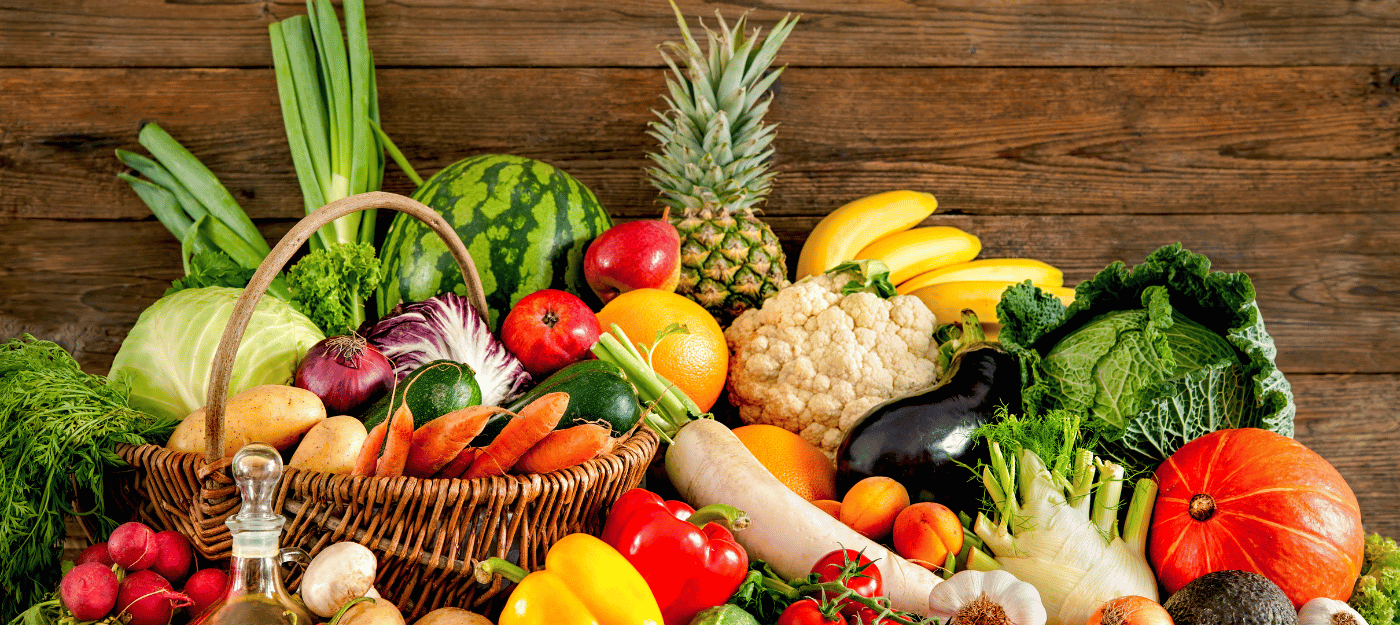Food Waste Reduction and Sustainability

Food waste reduction and sustainability are pressing issues that demand our attention. Every year, a staggering amount of food is wasted worldwide, contributing to significant social, economic, and environmental consequences. In this article, we will delve into the various strategies to tackle the issue of food waste at different levels, from individual actions to community initiatives.
What is Food Waste?
Food waste occurs when edible food is discarded and sent to landfills instead of being consumed. This wastage not only squanders valuable resources like water, energy, and labor but also exacerbates climate change through the release of methane gas in landfills. Additionally, food waste puts a strain on global food security and contributes to deforestation and habitat destruction.
The Impact of Food Waste
By understanding the impact of food waste and taking action, we can create a more sustainable future. Throughout this article, we will explore practical tips and techniques that individuals can implement in their daily lives to minimize food waste. From adopting a sustainable diet to planning meals, making smart purchases, and properly storing food, there are numerous ways we can all contribute to reducing food waste.
Join us in this movement towards a more sustainable future by implementing these strategies in your own life. Together, we can make a significant difference in combating food waste and creating a more environmentally friendly world.
The Urgency of Addressing Food Waste
The food waste crisis has reached alarming levels globally, with an estimated 1.3 billion tons of food wasted each year. This staggering amount of wastage equates to approximately one-third of all food produced for human consumption. The social, economic, and environmental implications of such massive food loss and waste are profound. Not only does it perpetuate global hunger and poverty, but it also contributes significantly to greenhouse gas emissions and climate change.
The Scale of the Problem
According to the Food and Agriculture Organization of the United Nations (FAO), nearly one-third of the food produced for human consumption, approximately 1.3 billion tons, is lost or wasted globally each year. This substantial volume of wastage occurs throughout the entire supply chain, from initial agricultural production to household consumption.

The Consequences of Food Waste
The consequences of this extensive food waste are far-reaching:
- Social Implications: Food scarcity and insecurity are exacerbated as a result of unnecessary food loss. Vulnerable populations worldwide suffer due to the mismanagement and squandering of vital food resources.
- Economic Implications: The financial impact of food waste extends across the entire supply chain, leading to significant economic losses for producers, retailers, and consumers alike.
- Environmental Implications: Food waste significantly contributes to environmental degradation, placing undue pressure on natural resources such as water, land, and energy. Moreover, as organic matter decomposes in landfills, it emits methane gas—a potent greenhouse gas linked to climate change.
Taking Action for a Sustainable Future
The urgency of addressing food waste cannot be overstated. It is imperative that individuals, communities, businesses, and governments take concerted action to combat this pervasive issue and work towards a more sustainable future.
1. Understanding Food Waste at Different Stages
Food waste can occur at different stages, including before it reaches the consumer and after it is purchased. Let’s take a closer look at the main issues surrounding food waste before it reaches the consumer.
1.1 Pre-consumer Food Loss: From Farm to Market
The process of getting food from the farm to the market is not always smooth, and this can result in a significant amount of food being wasted before it even reaches the store shelves. There are several reasons why this happens:
- Inefficient supply chains: When the transportation and distribution of food are not well-organized, delays and mishandling can lead to spoilage or damage.
- Lack of proper storage infrastructure: Without adequate facilities to store perishable items like fruits and vegetables, they are more likely to go bad before they can be sold.
These challenges contribute to what is known as pre-consumer food loss, which has a negative impact on the sustainability of our food systems. It is important to find ways to address these issues and create a more efficient and sustainable supply chain overall.
1.2 Post-consumer Food Waste: At Home and Beyond
Food waste doesn’t just happen at the pre-consumer stage; it continues to be a pressing issue even after the food reaches consumers. Understanding the causes and consequences of post-consumer food waste is essential for tackling this problem effectively.
Food Waste Generation Stages
To grasp the full extent of post-consumer food waste, it’s important to consider the different stages at which it occurs. These stages include:
- Households: This is where a significant amount of food waste occurs, often due to factors such as overbuying, improper storage, or neglecting leftovers.
- Restaurants: The restaurant industry also contributes to post-consumer food waste, with factors such as large portion sizes, plate waste, and inadequate inventory management playing a role.
- Retail: Supermarkets and grocery stores generate food waste through practices like imperfect produce rejection, product expiration, and damaged packaging.
Behavioral Factors
Consumer behavior plays a crucial role in post-consumer food waste. Several factors contribute to this issue:
- Lack of awareness: Many people are unaware of the scale and impact of food waste or how their own actions contribute to it.
- Impulsive buying: Impulse purchases often lead to buying more than needed, resulting in excess food that goes to waste.
- Misinterpretation of date labels: Confusion around date labels leads consumers to discard perfectly edible food prematurely.
- Inadequate meal planning: Without proper meal planning, people may buy ingredients they don’t end up using or forget about perishable items until they spoil.
Retail and Consumer-Level Food Waste Initiatives
Efforts are being made at both the retail and consumer levels to reduce post-consumer food waste:
- Retailers: Many supermarkets and grocery stores have implemented initiatives aimed at minimizing food waste in their operations. These include improved inventory management systems to reduce overstocking and better forecasting of customer demand. Some retailers also collaborate with food banks and other organizations to donate surplus food.
- Consumers: Individuals can make a significant impact by adopting practices that reduce food waste at home. This includes meal planning, making smart purchasing decisions, properly storing food to maximize freshness, and finding creative ways to use leftovers.
By addressing consumer behavior and encouraging collaboration between retailers and consumers, we can significantly reduce post-consumer food waste.
2. Environmental Impact of Food Waste
Food waste not only has social and economic implications but also poses a significant threat to the environment. In this section, we will explore how food waste contributes to climate change and other environmental consequences. We will also discuss a case study that highlights the carbon footprint of food waste at different stages of the supply chain.
Food Waste and Climate Change
One of the major environmental impacts of food waste is its contribution to climate change. When organic waste, such as food scraps, ends up in landfills, it decomposes and produces methane gas. Methane is a potent greenhouse gas that is estimated to have 25 times the warming potential of carbon dioxide over a 100-year period[^1^]. The release of methane from landfills significantly contributes to global warming and exacerbates climate change.
Moreover, food production requires valuable resources such as water, energy, and land. When food is wasted, these resources are essentially squandered as well. This leads to resource depletion and further strains on the environment.
Other Environmental Consequences
In addition to climate change, food waste has various other negative environmental consequences:
Water Footprint
The production of wasted food involves the unnecessary consumption of water resources. According to estimates by the United Nations’ Food and Agriculture Organization (FAO), about 250 km³ of water is used each year to produce food that goes uneaten[^2^]. This represents a substantial waste of water resources and exacerbates global water scarcity issues.
Land Use
Agricultural land is required for food production. However, when food is wasted, it implies that vast amounts of land have been cultivated unnecessarily. This leads to deforestation, habitat destruction, and loss of biodiversity.
Energy Consumption
The production, processing, transportation, and storage of food require significant energy inputs. When food is wasted, all the energy invested in its production becomes wasted as well. This unnecessary energy consumption contributes to carbon emissions and further strains our already overburdened energy systems.
Case Study: The Carbon Footprint of Food Waste
A recent study conducted by the Food and Agriculture Organization (FAO) quantified the carbon footprint of food waste at different stages of the supply chain[^3^]. The study found that food losses and waste account for approximately 8% of global greenhouse gas emissions. This is a staggering figure considering the impact it has on climate change.
The study also highlighted that different regions have varying levels of food waste and associated carbon emissions. For example, in developing countries, significant food losses occur during production, due to issues such as inadequate storage facilities and poor infrastructure. On the other hand, in developed countries, a significant portion of food waste occurs at the consumer level, where individuals discard edible food due to various reasons, including improper meal planning and confusion about date labels.
Urgent Action Needed
The environmental impact of food waste is undeniable. It not only contributes to climate change but also exacerbates water scarcity, leads to land degradation, and increases energy consumption. Urgent action is required at all levels to address this critical issue.
- Individuals can make a difference by adopting sustainable eating habits, reducing food waste at home, and supporting organizations that work towards minimizing food waste.
- Communities can implement initiatives such as community gardens, composting programs, and educational campaigns to raise awareness about the importance of reducing food waste.
- It is crucial for governments, businesses, and policymakers to prioritize this issue by implementing policies that promote sustainable agriculture practices, improve supply chain efficiency, and support initiatives aimed at reducing food waste.
Reducing food waste requires a collective effort from all stakeholders involved in the food system. By taking action now, we can mitigate the environmental impact of food waste and pave the way for a more sustainable future.
3. Key Role of Individuals and Communities in Reducing Food Waste
Food waste reduction starts with individuals making conscious choices in their daily lives. By understanding the impact of our actions and adopting sustainable practices, we can significantly contribute to reducing food waste at the source. Additionally, collective efforts at the community level can multiply the impact and create a more sustainable future for all.
How Individuals Can Make a Difference
It is essential to recognize that each person’s actions matter when it comes to preventing food waste. By being mindful of our consumption habits, we can make a significant difference. Here are some steps individuals can take:
- Plan meals: Plan your meals for the week before going grocery shopping to avoid buying more than you need.
- Buy only what you need: Make a shopping list and stick to it to minimize impulse purchases.
- Store food properly: Learn how to store different types of food correctly to extend their shelf life.
- Use leftovers creatively: Get creative with leftover ingredients or meals to reduce food waste.
The Power of Community Collaboration
While individual actions are crucial, collaboration at the community level is equally important. When communities come together to address food waste, they can implement initiatives such as:
- Community composting programs
- Neighborhood sharing networks for excess food
- Supporting local food banks and shelters
By working together, individuals and communities can create a positive ripple effect. When one person adopts sustainable practices, they inspire others to follow suit, creating a domino effect that leads to a collective reduction in food waste.
“Be the change you wish to see in the world.” ― Mahatma Gandhi
It is important to remember that no effort is too small. Whether it’s sharing surplus produce from your garden with neighbors or organizing a community event to raise awareness about food waste, every action contributes to the cause. By taking responsibility for our own actions and inspiring those around us, we can collectively make a significant impact in reducing food waste and striving towards a more sustainable future.
Practical Strategies to Minimize Food Waste in Your Daily Life
When it comes to reducing food waste in your daily life, there are several practical strategies that you can implement. By adopting these strategies, you can make a significant impact in minimizing food waste and contributing to a more sustainable future. Here are some tips and techniques to help you get started:
1. Food waste prevention tips
Start by being mindful of the food you buy and consume. Consider the following practices:
- Make a shopping list: Plan your meals and create a shopping list based on what you need. This will help you avoid buying unnecessary items that may end up going to waste.
- Buy in bulk: Purchasing items in bulk can help reduce packaging waste and save money. Just make sure to only buy what you can consume before it spoils.
- Check expiration dates: Pay attention to expiration dates on perishable items and use them before they go bad.
- Embrace “ugly” produce: Misshapen or imperfect fruits and vegetables are often discarded by retailers, but they are still perfectly good to eat. By buying these items, you can help reduce food waste.
2. Sustainable eating habits
Making conscious choices about your diet can also contribute to reducing food waste. Consider the following practices:
- Eat seasonal produce: Opt for fruits and vegetables that are in season, as they are more likely to be locally sourced and have a lower carbon footprint.
- Reduce meat consumption: Animal agriculture has a significant environmental impact. By reducing your meat consumption or adopting a plant-based diet, you can help minimize food waste associated with meat production.

3. Meal planning
Planning your meals ahead of time is an effective way to prevent food waste. Here’s how you can do it:
- Take inventory: Before going grocery shopping, check your pantry and fridge to see what ingredients you already have. This will help you avoid buying duplicates.
- Portion control: Cook and serve appropriate portions to avoid leftover food that might go uneaten.
- Save leftovers: If you do have leftover food, store it properly and incorporate it into future meals. Get creative with recipes and find ways to repurpose leftovers.
4. Proper storage techniques
Properly storing food can extend its shelf life and reduce the chances of spoilage. Consider these storage tips:
- Use airtight containers: Store leftovers in airtight containers to keep them fresh for longer.
- Understand food labeling: Familiarize yourself with different types of date labels, such as “sell by,” “best by,” and “use by,” to ensure you consume food before it becomes unsafe.
5. Composting
Composting is an excellent way to divert organic waste from landfills and create nutrient-rich soil for plants. Here’s how you can start composting:
- Set up a compost bin: Find a suitable spot in your backyard or explore indoor composting options if you live in an apartment.
- Compostable materials: Include fruit and vegetable scraps, coffee grounds, tea leaves, eggshells, and yard waste in your compost pile.
By implementing these practical strategies, you can significantly reduce food waste in your daily life. Remember, small changes can make a big difference when it comes to sustainability. Join the movement towards a more sustainable future by incorporating these tips into your routine.
4.2 Planning Meals, Making Smart Purchases, and Properly Storing Food
Benefits of sustainable eating habits
Sustainable eating habits not only contribute to reducing food waste but also offer various benefits for both individuals and the environment. By adopting sustainable dietary choices, you can:
- Contribute to the reduction of greenhouse gas emissions associated with food production.
- Support ethical and sustainable farming practices.
- Improve personal health by consuming a more diverse range of nutrient-rich foods.
- Save money by reducing food waste and making more conscious purchasing decisions.
Reducing meat consumption
Transitioning to a plant-based diet or simply reducing meat consumption can significantly contribute to minimizing food waste. Here are some tips for achieving this:
- Explore plant-based alternatives: Experiment with delicious plant-based recipes and incorporate more fruits, vegetables, legumes, and whole grains into your meals.
- Embrace meatless days: Designate certain days of the week as “meatless” and explore vegetarian or vegan meal options.
- Opt for sustainably sourced meats: When choosing to include meat in your diet, prioritize products from ethical and sustainable sources.
By making these adjustments to your dietary habits, you can actively participate in the movement towards reducing food waste and promoting sustainability on a personal level.
4.2 Planning Meals, Making Smart Purchases, and Properly Storing Food
Meal planning is a crucial step in minimizing food waste and ensuring that you only purchase what you need. By strategizing your meals in advance, you can effectively utilize ingredients before they spoil, thus reducing unnecessary waste. Here are some practical tips for effective grocery shopping to complement your meal planning efforts:
Tips for Effective Grocery Shopping
- Make a Detailed List: Before heading to the grocery store, create a detailed list of the items you actually need. This will help you avoid impulse purchases and prevent overbuying, leading to less food waste.
- Avoid Impulse Purchases: Stay focused on your list and avoid succumbing to impulse purchases based on attractive packaging or promotional offers. Stick to purchasing only what you genuinely require for planned meals.
- Consider Proper Food Storage: Understanding the best methods for storing different types of food is essential for extending their shelf life and preventing premature spoilage. Utilize airtight containers for perishable items and ensure proper refrigeration to maintain their freshness for longer periods.
Meal Planning Strategies Based on Dietary Preferences
When it comes to meal planning, consider the following strategies based on diverse dietary preferences:
- Ketogenic Diet Considerations: If you follow a ketogenic diet, plan meals that utilize high-fat, moderate-protein, low-carb ingredients to align with your dietary requirements. Ensure that your shopping list reflects these specific needs to minimize excess purchases.
- Post-Workout Meals: For individuals focused on post-workout nutrition, plan meals that incorporate adequate protein sources and nutrient-dense ingredients. By pre-planning these meals, you can optimize your grocery shopping and reduce the likelihood of unused perishable items.
- Plant-Based Eating: Those embracing a plant-based diet can benefit from meal planning by incorporating a variety of fruits, vegetables, legumes, and whole grains into their weekly menus. This approach ensures that plant-based staples are efficiently utilized without unnecessary waste.
By integrating these strategies into your routine, you can significantly reduce food waste through mindful meal planning, strategic grocery shopping, and proper food storage techniques.
4.3 Understanding Food Labeling and Avoiding Premature Discarding
Common Misconceptions About Expiration Dates
When it comes to food labeling, there are often misconceptions about expiration dates that contribute to unnecessary food waste. Many consumers tend to discard food items prematurely based on these dates, leading to significant waste. It’s important to raise awareness about the reality behind expiration dates and empower individuals to make informed decisions about the food they consume.
1. Expiration Dates and Product Safety
One common misconception is that the “sell by” or “use by” dates indicate the safety of the product. In reality, these dates are more related to the quality and freshness of the item rather than its safety. Manufacturers use these dates to suggest peak quality, but it doesn’t mean that the product automatically becomes unsafe to consume after that date.
2. Understanding “Use By” and “Best Before” Dates
Another point of confusion is the difference between “use by” and “best before” dates. The former is more related to safety, indicating that consuming the product after that date may pose a health risk. On the other hand, “best before” dates signify that the product might not be at its peak quality after that date but can still be consumed safely.

How to Assess Food Quality
It’s essential for consumers to rely on their senses and judgment when evaluating the condition of food products. Here are some tips:
- Smell: If a product has an off smell or odor, it’s likely spoiled.
- Visual Inspection: Mold, discoloration, or unusual texture are signs of spoilage.
- Taste Test: While this may not be feasible for all foods, tasting a small amount can help determine if it still tastes fresh.
By debunking these misconceptions and encouraging a more mindful approach to assessing food items, individuals can significantly reduce unnecessary food waste while making informed choices about their consumption habits.
4.4 Supporting Organizations and Initiatives Addressing Food Waste
There are numerous non-profit organizations and government initiatives that are actively working towards reducing food waste and promoting sustainability. These organizations play a crucial role in raising awareness, implementing innovative solutions, and advocating for policy changes to address the global issue of food waste.
Food Recovery Programs
Many organizations focus on rescuing surplus food from various sources and redistributing it to those in need. These programs prevent perfectly edible food from going to waste and help combat hunger at the same time.
- Feeding America: This nationwide network of food banks collects excess food from farmers, manufacturers, and retailers, and distributes it to local communities.
- City Harvest: Operating in New York City, this organization rescues surplus food from restaurants, grocery stores, and farmers markets, and delivers it to soup kitchens, shelters, and other community programs.
- Olio: A mobile app that connects neighbors with each other and with local businesses to share surplus food.
Advocacy Campaigns
Several organizations run advocacy campaigns to raise awareness about the environmental impact of food waste and encourage individuals, businesses, and governments to take action. These campaigns aim to shift behaviors by promoting sustainable practices and influencing policy changes.
- Save The Food: This campaign by the Natural Resources Defense Council (NRDC) educates consumers about the consequences of food waste and provides practical tips for reducing waste at home.
- Love Food Hate Waste: Run by WRAP (Waste & Resources Action Programme) in the United Kingdom, this campaign offers resources on meal planning, portion control, and creative cooking to minimize food waste.
- Think.Eat.Save: Led by the United Nations Environment Programme (UNEP), this global campaign raises awareness about the social, economic, and environmental impacts of food waste and encourages individuals, businesses, and governments to take action.
These organizations and initiatives are making significant strides in reducing food waste and promoting sustainability. By supporting them through donations, volunteering, or simply spreading the word about their work, individuals can contribute to the collective effort in tackling this pressing issue.
“Food waste is a global problem that requires collective action. Supporting organizations and initiatives dedicated to reducing food waste is an effective way to make a meaningful impact.”
Conclusion
Reiterating the importance of taking immediate action to combat food waste is crucial in fostering a sustainable future. By implementing the strategies discussed in this article, each person can play a significant role in reducing food waste at various stages, from pre-consumer loss to post-consumer waste. It’s essential not only to practice these strategies individually but also to spread awareness and advocate for change within our communities.
“Be the change that you wish to see in the world.” – Mahatma Gandhi
This powerful quote encapsulates the significance of reducing food waste and emphasizes the impact of individual actions on creating a more sustainable future. Let’s take the first step towards change by embracing practical food waste reduction strategies and inspiring others to join the movement.








